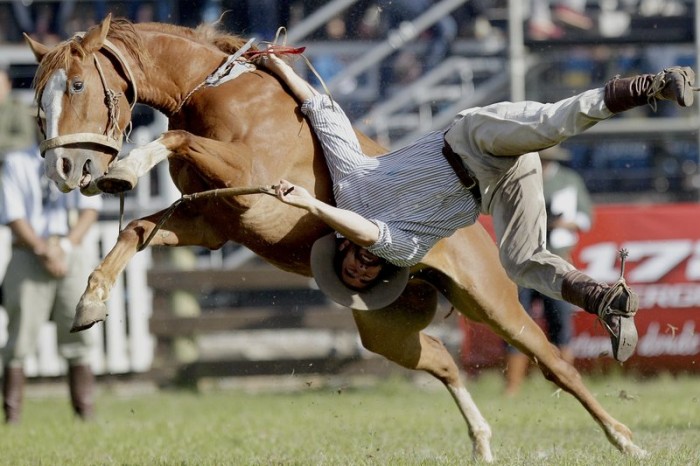
The lack of protective equipment in rodeo riders
Wearing protection (such as body protectors, caps and mouthpieces) are available for rodeo riders, but how often they are used is unclear and probably not that much. In 2004 the first International Rodeo Research and Clinical Care Conference recommended that all riders aged 18 or older should be encouraged to wear something of protection. Research aiming at the usefulness of protection has only been done to a limited extent and is mainly focussed on wearing caps. A great deal of these researches have been done in the United States.
In this pilot study (exploratory research that examines a small group) the researchers examined whether (and what kind) of protection rodeo riders wear. The researches also examined why a lot of athletes do not use protection. Throughout the United States of America, research packages have been delivered at as many locations as possible to both professional and amateur redundancies. This research package consisted a cover letter, a questionnaire with both open and closed questions, a return envelope and additional information. In addition to demographic characteristics such as age and gender, it also examined which parts of rodeo someone participated in, what level the athletes were, how often and what kind of protection they wore and what kind of injuries occured. In addition a question that directed to the benefit of protection was added to the research.
Most of the riders indicated that protection is useful. Although the athletes saw the usefulness of protective clothing, only a few used it. For example, 70% of the athletes did not wear a cap and about 40% do not wear mouth pieces. It was stated (quite often) that a cap made it more difficult to ride. Appearence was also a reason not to wear protective gear.
What is your opinion on the lack of use of protective gear in rodeo riders?
Expert opinion by Sophie Delemarre
The last few articles in which precautionary measures against injuries are discussed, show that many riders understand that protection is useful, but consciously choose not to wear anything because it is not practical or doesn't match the appearence of a rodeo rider.
> From: Ross et al., Curr. Sports Med. Rep. 6:6 (2010) 242-346. All rights reserved to American College of Sports Medicine. Click here for the online summary.


